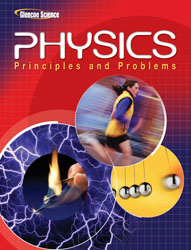1 In the photograph below, if the baseballs fell a vertical distance of 1.6 m from the first to the last image, how long did it take them to fall?
<a onClick="window.open('/olcweb/cgi/pluginpop.cgi?it=jpg::::/sites/dl/free/0078807220/617914/lo.JPG','popWin', 'width=NaN,height=NaN,resizable,scrollbars');" href="#"><img valign="absmiddle" height="16" width="16" border="0" src="/olcweb/styles/shared/linkicons/image.gif"> (9.0K)</a> A) 0.16 s B) 0.32 s C) 0.40 s D) 0.57 s 2 A) 29 m/s B) 33 m/s C) 40 m/s D) 38 m/s 3 A) 135 m B) 225 m C) 15 m D) 45 m 4 A) trajectory B) range C) flight time D) centripetal acceleration 5 A) 66 m B) 42 m C) 72 m D) 13 m 6 A) projectile B) satellite C) free floater D) vector 7 A) period B) flight plan C) trajectory D) range 8 A) torque B) maximum height C) range D) trajectory 9 A) torque B) trajectory C) range D) maximum height 10 In the picture below, if the baseballs fell a vertical distance of 1.6 m from the first to the last image, what is the time interval between frames?
<a onClick="window.open('/olcweb/cgi/pluginpop.cgi?it=jpg::::/sites/dl/free/0078807220/617914/lo.JPG','popWin', 'width=NaN,height=NaN,resizable,scrollbars');" href="#"><img valign="absmiddle" height="16" width="16" border="0" src="/olcweb/styles/shared/linkicons/image.gif"> (9.0K)</a> A) 0.23 s B) 0.082 s C) 0.095 s D) 0.071 s 11 A) equilibrium B) torque C) range D) centripetal acceleration 12 A) 9.4 m/s B) 3.4 m/s C) 5 m/s D) 11 m/s 13 A) 41 m/s2 outwards B) 41 m/s2 inwards C) 11 m/s2 inwards D) 11 m/s2 outwards 14 A) 33 m/s2 B) 22 m/s2 C) 4.5 m/s2 D) 3.0 m/s2 15 A) 22 N B) 4.5 N C) 3.0 N D) 33 N 16 A) uniform circular motion B) projectile motion C) torque D) equilibrium 17 Which of the following situations is physically the most like that depicted in the diagram below?
<a onClick="window.open('/olcweb/cgi/pluginpop.cgi?it=jpg::::/sites/dl/free/0078807220/617914/lp.JPG','popWin', 'width=NaN,height=NaN,resizable,scrollbars');" href="#"><img valign="absmiddle" height="16" width="16" border="0" src="/olcweb/styles/shared/linkicons/image.gif"> (3.0K)</a> A) You slide to the right on the seat of a forward-moving bus. B) You walk toward the rear of a forward-moving bus. C) You walk forwards on a forward moving bus. D) You step upwards onto a bus as you board it. 18 A) 18.0 m/s relative to the water B) 15.3 m/s relative to the water C) 12.0 m/s relative to the water D) 9.0 m/s relative to the water














